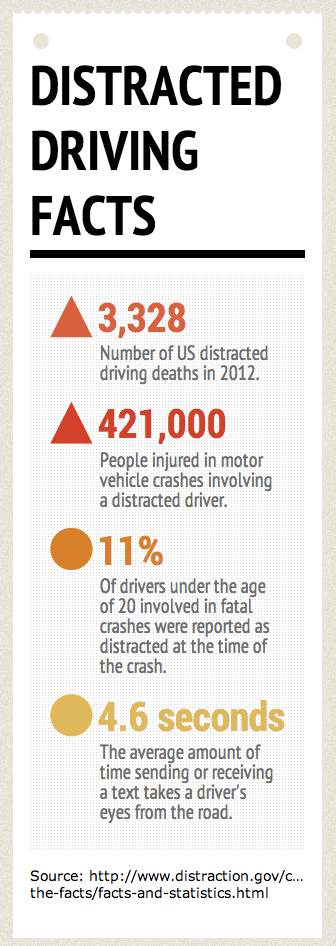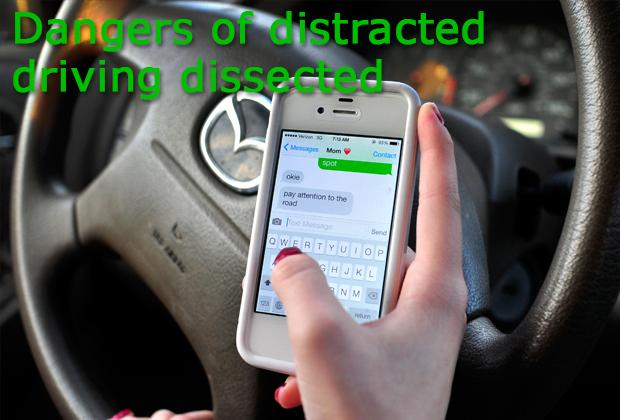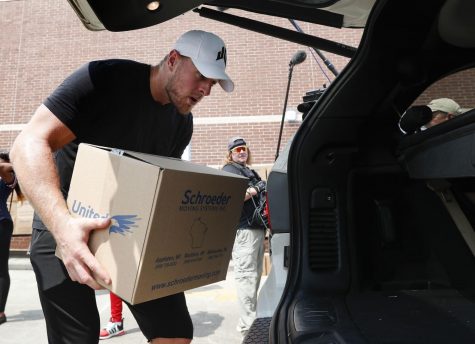Dangers of distracted driving dissected
A student is reminded to drive safely by their mother. Distracted driving is on the rise and states are taking up the issue with new laws.
Imagine driving the entire length of a football field at 55 miles per hour. Now imagine doing it blind. That 100-yard drive would take about 4.6 seconds, which is also the average amount of time spent sending or reading a text while driving according to Distraction.gov.
There are three main types of distracted driving: visual (where the driver takes their eyes off the road), manual (the driver takes their hands off the wheel) and cognitive (the mind of the driver is on something other than driving). Senior Chelsea Karrenbrock considers distracted driving to be the easiest way to get into an accident.
“Whether someone is doing makeup, eating or talking on the phone while driving, it’s a dangerous web to weave,” she said. “To me, texting and driving is most dangerous because it combines all three forms of distracted driving in one. People don’t realize that this is adding a large amount of unnecessary risk to driving, for themselves and for others on the road.”

According to the Safe America Foundation, texting while driving creates a crash risk 23 times worse than driving undistracted, this has also become the single most common reason Americans give for feeling less safe while driving than they did five years ago. Junior Gordon Trehern believes that it is the driver’s personal responsibility to avoid distractions while driving to prevent accidents.
“It’s dangerous to drive distracted because it causes a delayed reaction time and people to be less cautious,” he said. “It would be so much safer if everyone made the decision to focus on driving and not a text or call that can wait.”
A recent study by the Centers for Disease Control and Prevention found that a higher percentage of U.S. drivers talked, texted or e-mailed while driving than drivers in many other European countries. The same study found that 69 percent of U.S. drivers between the ages of 18 to 64 years old reported talking while driving within the 30 days leading up to the survey.
“The U.S. is a careless country where everyone believes they are invincible and the world revolves around them,” Karrenbrock said. “Most people have smartphones that give them access to thousands of apps and other abilities in a split second; they don’t realize that’s how long it takes for a wreck to occur.”
Many states are beginning to impose laws prohibiting distracted driving. There is currently a statewide ban on all cellphone use by bus drivers and novice drivers. Texas has also banned the use of cellphones in school zones. Officer Brandon Walters believes that the state should strengthen distracted driving laws.
“It’s becoming more and more of a problem today to the point where I think laws should be strengthened for safety,” he said. “I think it will be interesting to see what happens in the future.”








